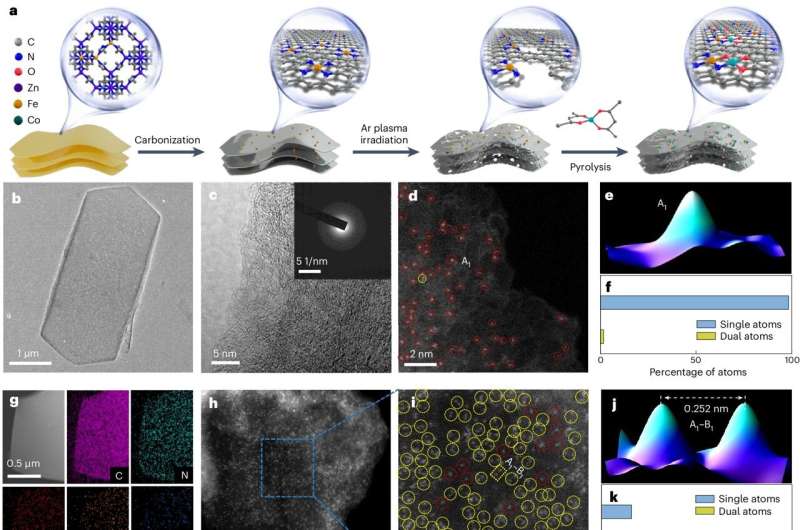This article has been reviewed according to Science X's editorial process and policies. Editors have highlighted the following attributes while ensuring the content's credibility:
fact-checked
peer-reviewed publication
trusted source
proofread
'Janus' dual-atom catalyst shows enhanced performance for electrocatalytic oxygen reduction and evolution

A research team led by Prof. Yan Wensheng from the University of Science and Technology of China (USTC) has created the innovative "Janus" dual-atom catalyst (FeCo-N3O3@C) with Fe and Co atoms coordinated synergistically through an N-O bridge, which has showed exceptional performance in both oxygen reduction reaction (ORR) and oxygen evolution reaction (OER). The study was published in Nature Synthesis.
Bimetal active-center adjacent atomically dispersed diatomic catalysts have unique geometric and electronic structures, exhibiting higher catalytic activity and selectivity than single-atom catalysts. However, the local coordination structure analysis and multifunctional catalysis of heteronuclear diatomic catalysts are challenging.
The team developed a "double-faced deity" catalyst with different ligands at the Fe-Co heterobimetallic site. They confirmed that the Fe and Co atoms were synergistically coordinated with N atoms and O atoms respectively through N-O bridging with the help of spectroscopic techniques and multiple scattering theoretical calculations.
Electrochemical tests showed that this catalyst exhibited exceptional performance in both ORR and OER, surpassing the commercial Pt/C+RuO2 combination.
Researchers further revealed that the key to its high catalytic activity lay in the strong electronic interaction between Fe-N3 and Co-O3 units. Further analysis clarified that the strong electronic coupling effect altered the electron density of the Fe and Co atoms' d-orbitals. It optimized the adsorption and desorption processes of intermediates, thereby accelerating the reaction kinetics of ORR and OER.
This work offers novel perspectives on the rational design and structural characterization of high-performing novel dual-atom catalysts.
More information: Bing Tang et al, A Janus dual-atom catalyst for electrocatalytic oxygen reduction and evolution, Nature Synthesis (2024). DOI: 10.1038/s44160-024-00545-1
Journal information: Nature Synthesis
Provided by University of Science and Technology of China




















